The Ravens Warband
Seax
Seax is the Anglo-Saxon word used to describe both a single edged knife, and
a single edged sword ('long-seax') similar to a machete. Long-seaxes do not
appear to have been used in England in the early Saxon period.
The term 'scramasax' is also often used although it occurs only once in a
historical account, in the 'History of the Franks' by Gregory of Tours. He
describes how the sixth century Frankish king Sigibert is assassinated by two
young men using 'strong knives commonly called scramasaxes' (cultris validis
quos vulgo scramasaxos vocant). It should be noted that, given the date, the
reference was probably to large knives rather than long-seaxes.
Fig.1 shows the six basic shapes of knife blade used in the pagan Saxon
period. Sizes (blade plus tang) ranged from very small (3") to about 12".
A typical fighting knife is about 8" long.
|
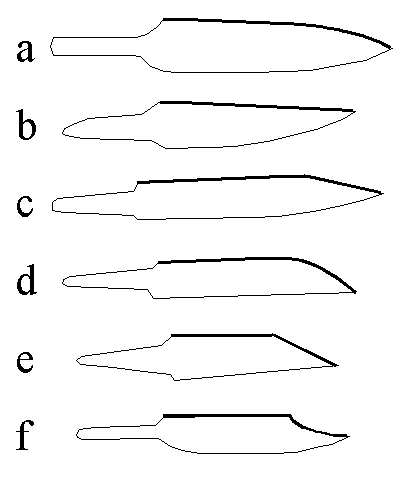
|
Figure 1: Knife types
a. Curved back, curved cutting edge, late fifth to early eighth
century;
b. Straight back, curved cutting edge, late fifth to late seventh
century;
c. Angled back, curved cutting edge, mid sixth to early eighth
century;
d. Curved back, straight cutting edge, early seventh to early eighth
century;
e. Angled back, straight cutting edge, late sixth to early eighth
century;
f. Straight back in-curved near tip, curved cutting edge, late seventh
century.
|
Cut the blade from steel plate (3/32" to 1/8" thick) using a
hacksaw. Make sure the point is well rounded, use the curvature of a penny
piece as a guide. File all the edges smooth and round them off (fig 2); finish
smoothing with emery paper.
|
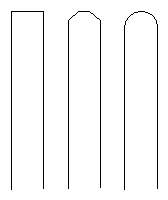
|
|
Figure 2: Stages in rounding the edge |
The handle is most easily made from a softwood such as pine although coarse
grained hardwood, such as ash, or horn or bone can also be used. Cut the handle
roughly to shape and drill two holes the same diameter as the thickness of the
blade in one end. Remove the wood between the holes with a chisel to make a slot
to accept the tang of the blade. Hammer the blade into place. If the blade is
loose pack the hole with strips of wood or use glue. Take care not to split the
wood, but if it does split start again (hence not finishing the handle before
assembly). File and sand the handle to shape.
You will also need a sheath which should be made from stiff leather. Lay
your knife an the leather and cut out the pattern as shown in fig.3 using
scissors or a sharp knife. Bend the belt loop back (fig.4) and sew to the back
of the sheath. Fold the sheath over, and holding the knife in place, sew
tightly around it (fig 5).
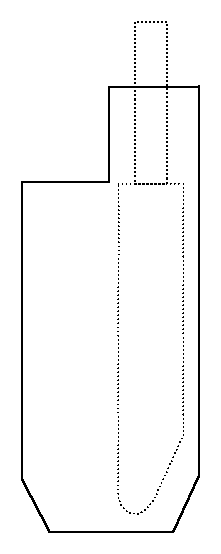 |
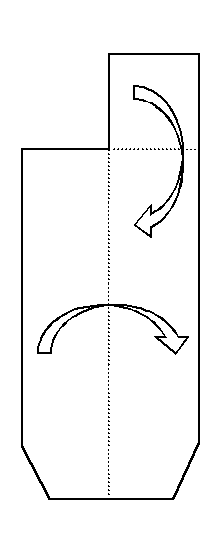 |
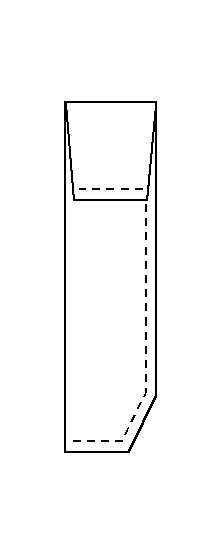 |
| Figure 3: Sheath pattern |
Figure 4: Sheath construction |
Figure 5: Completed sheath (back view) |
 Back to the
guide.
Back to the
guide.
 Back to the
main page.
Back to the
main page.





